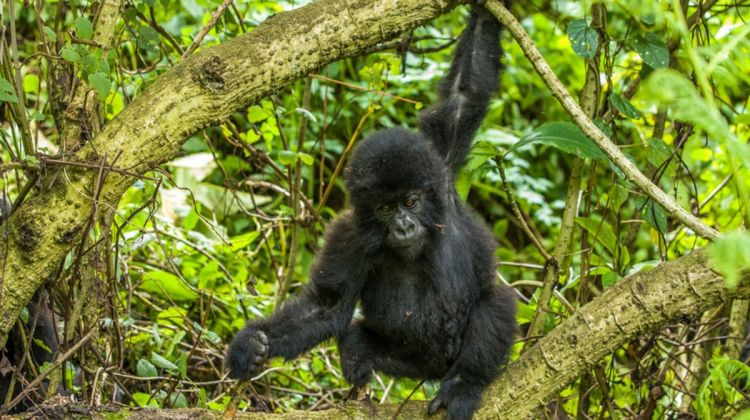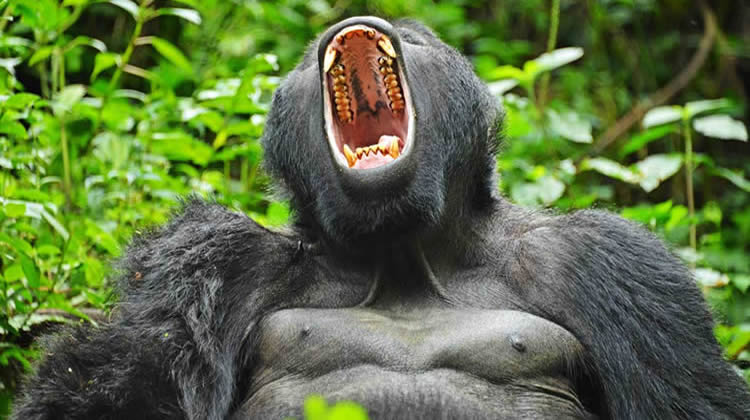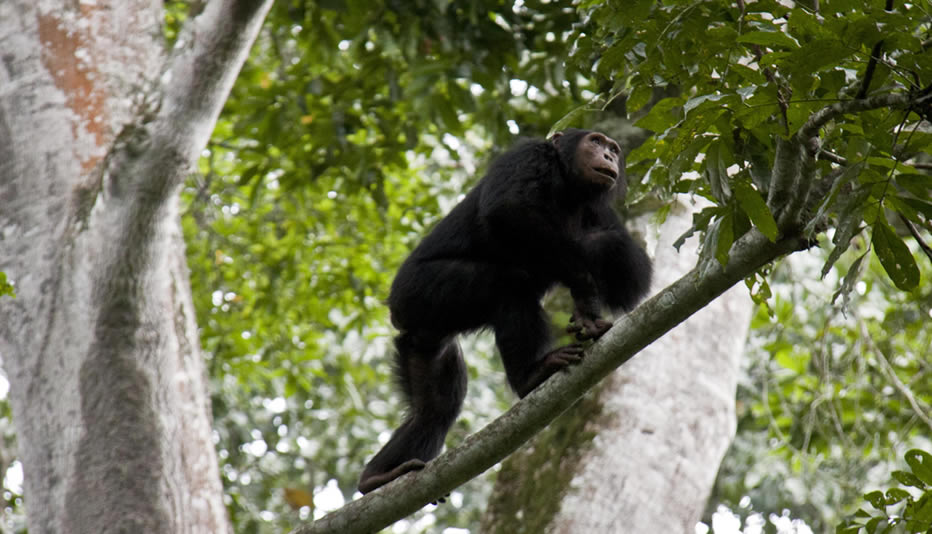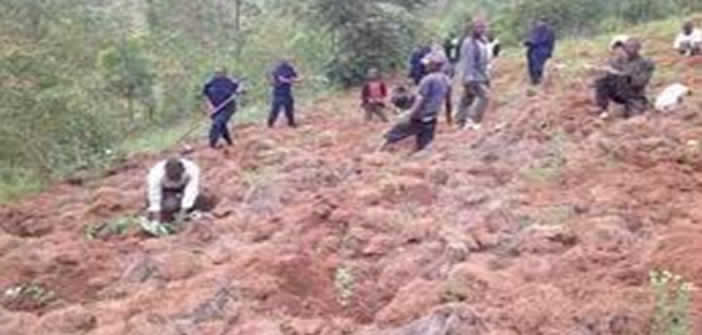
2022 Gorilla Trekking Adventure on Your Bucket List
We had a 2 days gorilla trek. Most people we talked to did only one day, but we wanted to maximize our visit, and I am glad we did. The first day was great- did “easy” trek which was about 1hr 45 min one way, across a field and up a mountain. The visit with the gorilla family was phenomenal. On day 2 we had rain, did the easy trek and were hiking a bit longer with a more difficult hike. Some people on the easy treks only hiked about 1/2 hour.
The fur of the mountain gorilla is often thicker and longer than that of other gorilla species, enables them to live in colder temperatures. Gorillas can be identified by nose prints unique to each individual. Males, at a mean weight of 195 kg (430 lb) and an upright standing height of 150 cm (59 in) usually weigh twice as much as the females, at a mean of 100 kg (220 lb) and a height of 130 cm (51 in). This subspecies is on average the second largest species of primate; only the Eastern Lowland Gorilla, the other subspecies of Eastern Gorilla, is larger.

Mountain Gorilla in the Jungle
Adult males have more pronounced bony crests on the top and back of their skulls, giving their heads a more conical shape. These crests anchor the powerful temporalis muscles, which attach to the lower jaw (mandible). Adult females also have these crests, but they are less pronounced. Like all gorillas, they feature dark brown eyes framed by a black ring around the iris.
Adult males are called silverbacks because a saddle of grey or silver-coloured hair develops on their backs with age. The hair on their backs is shorter than on most other body parts, and their arm hair is especially long. Fully erect, males reach 1.9 m (6 ft. 3 in) in height, with an arm span of 2.3 m (7 ft. 7 in) and weigh 220 kg (490 lb). The tallest silverback recorded was a 1.94 m (6 ft. 4 in) individual shot in Alimbongo, northern Kivu in May 1938. There’s an unconfirmed record of another individual, shot in 1932, that was 2.06 m (6 ft. 9 in) tall. The heaviest was a 1.83 m (6 ft.) silverback shot in Ambam, Cameroon which weighed about 266 kg (586 lb).
The mountain gorilla is primarily terrestrial and quadruped. However, it will climb into fruiting trees if the branches can carry its weight, and it is capable of running bipedally up to 6 m (20 ft.) Like all great apes other than humans, its arms are longer than its legs. It moves by knuckle-walking (like the common chimpanzee, but unlike the bonobo and both orangutan species), supporting its weight on the backs of its curved fingers rather than its palms.
The mountain gorilla is diurnal, most active between 6:00 a.m. and 6:00 p.m. Many of these hours are spent eating, as large quantities of food are needed to sustain its massive bulk. It forages in the early morning, rests during the late morning and around midday, and in the afternoon it forages again before resting at night. Each gorilla builds a nest from surrounding vegetation to sleep in, constructing a new one every evening. Only infants sleep in the same nest as their mothers. They leave their sleeping sites when the sun rises at around 6 am, except when it is cold and overcast; then they often stay longer in their nests.
It really depends on where the gorilla families are that morning and sometimes they move deeper into the mountain by the time the group gets to them. Day 2 we still saw the gorillas, but not as great as the first day as they were in a more heavily forested area. You get very close to them and they are so used to people they may try to grab you. I felt very safe with the guides, who were with us. Please hire a porter to carry your backpack and in another way you reduce unemployment to the local communities living near the gorillas and more encouraging them to save the mountain gorillas and the habitat of the mountain gorillas.
It is easier for you and it helps their families with the money in tips that you give them. You do tip the guides, the porters and the trackers (a group that finds the gorilla families in the morning). I am 56 years old and was able to complete the hikes, but was tired on the 2nd hike. It is important to get in shape before you go. If you take rain gear (which I strongly advise), make sure it is sturdy as our thin inexpensive rain gear tore to shreds on the bamboo and other vegetation. Take plenty of water as well. You will get amazing photos.
Getting to the Gorilla Park
Whether you are planning on a gorilla trek in Uganda or Rwanda, you must have a 4×4 vehicle for a fantastic drive through the misty jungles that are some times impassable especially in the rainy season. Car rental in Rwanda was made cheap and easier by 4×4 Uganda Ltd, the leading car rental agency allover East Africa. You can choose from a big fleet of 4x4s available that include Toyota Rav4, Prado, Land Cruiser VX and V8 among others.



